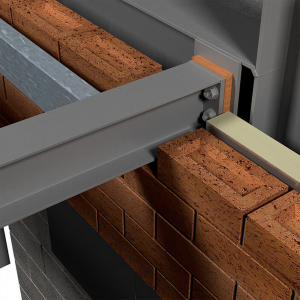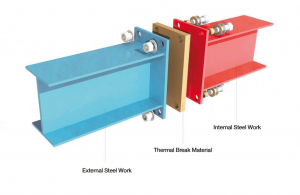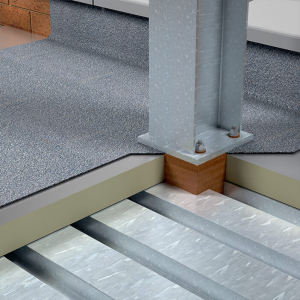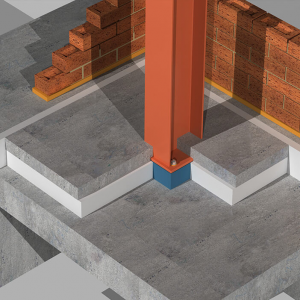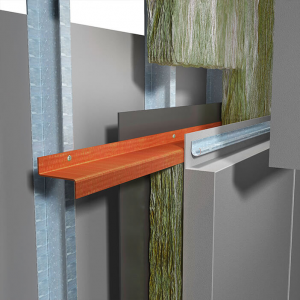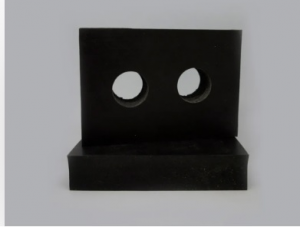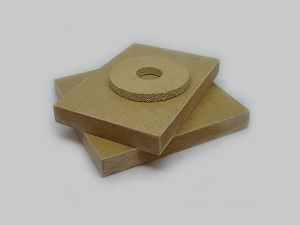ARMATHERM THERMAL BRIDGING SOLUTIONS
Suppliers of: Thermal Break Pads, Thermal Bridge solutions, balcony isolators, structural thermal breaks, cantilever steelwork thermal bridging, cold bridge isolation, thermal partitions, steelwork thermal break, thermal bridging solutions, cold bridging pads, cold br
Armatherm™ is one of the leading suppliers of structural thermal break materials for the construction industry. Our goal is to provide architects, structural engineers and building design professionals with effective solutions to prevent thermal bridging.
Office Locations in the United Kingdom, Republic of Ireland and the United States.
Thermal bridging has been recognised as a significant factor in building envelope heat loss. Armatherm™ thermal break materials have low thermal conductivity and high strength and have been designed and tested to prevent thermal bridging. Armatherm™ thermal bridging solutions can be used anywhere a penetration or transition exists in a building envelope creating a thermal bridge. Armatherm™ structural thermal break materials minimise heat loss at balcony, canopy, parapet, masonry shelf angle and cladding connections.
Armatherm™ THERMAL BREAK PRODUCTS:
Armatherm™ structural thermal break materials provide a combination of low thermal conductivity and high compressive strength. They have been specifically designed and tested to transfer load and prevent thermal bridging. Armatherm™ has been proven through three dimensional modeling to reduce heat loss in wall assemblies, transitions and structural connections throughout the building envelope.
--------------------------------------------------------------------------------------------------------------------------------------------------------------
Armatherm™ FRR is an extremely strong and durable thermal break material suitable for supporting heavy loads while cutting conductive heat loss.
(Thermal Insulation Material – TIM):
Armatherm™ FRR structural thermal break material provides a combination of low thermal conductivity and high compressive strength and has been used in hundreds of structural steel framing connections transferring load in moment and shear conditions. Armatherm™ FRR thermal break material can support high loads and has great mechanical properties. The material is made of a reinforced, thermoset resin which is fire resistant making it the ideal material for use in structural steel and façade thermal break connections.
Armatherm™ FRR Thermal Washer and Bushing:
With a bolt through insulation pad there is a slight thermal transfer along the connecting bolt. To further reduce heat loss, Armatherm™ FRR bushings and washers can be used on the warm face of the structure. A thermal break at the bolt connection will reduce heat loss an additional 4% per bolt depending on the wall assembly construction.
Structural Steel Thermal Break Connection:
Armatherm™ FRR Thermal Break Pads are often called Thermal Bridges, balcony isolators, structural thermal breaks, cantilever steelwork thermal bridging, cold bridge isolation, thermal partitions, steelwork thermal break, thermal bridging, cold bridging pads, cold bridging solutions. All of these solutions use Thermal Insulation Material TIM to prevent thermal bridging.
--------------------------------------------------------------------------------------------------------------------------------------------------------------
Armatherm™ 500 Structural Thermal Break Material is a high strength, polyurethane material manufactured in several densities to support a wide range of building loads.
(Thermal Insulation Material – TIM):
Reducing heat flow within a building’s thermal envelope reduces energy consumption as well as potential condensation issues. Armatherm™ 500 thermal break material (TIM) significantly reduces energy lost from thermal bridging in building envelope connections. Armatherm™ 500 structural thermal break material is a high strength, thermoset polyurethane manufactured in several densities. Armatherm™ 500 thermal break material can support high loads and has a selection of four grades of material with different compressive strength capabilities. The Armatherm™ 500 thermal insulation blocks have very limited creep under load, plus they do not absorb water because of their closed cell structure. Therefore, energy lost via thermal bridging is reduced within building envelope connections. Heat flow, energy consumption and potentially dangerous condensation issues are all minimised as a result.
Armatherm™ 500 – Parapet Roof Penetration Thermal Bridging Solution:
Thermal bridging is necessary in locations such as roof to wall and parapets as they require structural framing for support. By including thermal break materials under the parapet connecting the facade and roof insulation, the R value can be improved by as much as 30%. Within the building envelope, a thermal break can also be installed at roof penetration points where structural elements are supported.
Armatherm™ 500 – Column Base Thermal Bridging Solution (load dependent):
In a traditional structure, columns extend throughout the building envelope and slab insulation are positioned at their base. Cold bridges can be prevented with the use of a thermal break. Armatherm™ 500 has a limited creep under load as well as high strength, making it the best solution for load supporting thermal break requirements.
Armatherm™ 500 – Foundation Wall Thermal Bridging Solution (load dependent):
Further areas with the potential to feature thermal bridges are the foundations of a building and the connection from slab on grade to a foundation wall. Energy loss can be reduced dramatically with the addition of an Armatherm™ 500 series thermal insulation block which support exceptionally high loads of up to 300N/mm2.
--------------------------------------------------------------------------------------------------------------------------------------------------------------
Armatherm™ Z Girt is a nonconductive cladding support system, strong enough to hold most cladding and insulation details.
Armatherm™ Z Girt thermally broken cladding support connection solutions prevent excessive heat flow and potential condensation problems otherwise associated with thermal bridging. Moreover, wall assemblies using Armatherm attachments will meet the continuous insulation requirement of ASHRAE 90.1 and the effective R value requirements of the Canadian NECB energy code.
Modelling results show that using Armatherm Z girts results in several improvements in the thermal efficiency of wall designs, reducing heat flow:
- The insulation efficiencies of the wall assemblies increase significantly. Some as high as 98%.
- Higher, effective wall assembly R values are achieved using lower values of external insulation. For example, to obtain an R value of R-13 minimum to meet ASHRAE zone 1, steel girts require and external R 20; whereas Armatherm girts require only R 10.
- Cladding wall assemblies can meet the R value requirements of ALL geographical zones for both ASHRAE 2013 and NECB 2011 energy codes using Armatherm Z girts.
- Reduction in thickness and cost of insulation.
- Reduces energy consumption.
--------------------------------------------------------------------------------------------------------------------------------------------------------------
Armatherm™ thermal bridging solutions is part of the Armadillo Noise & Vibration Group which manufacture a wide range of Noise & Vibration products.
Armadillo Noise & Vibration Solutions offer suppressant materials for use in facilities and construction to include:
- Armaload - DLW66: Armaload DLW66 random oriented fiber (ROF) bearing pads are made from masticated elastomer which is fully cured and fiber reinforced.
- Armaload - Mil-C-882: Armaload is a preformed fabric bearing pad which meets MIL-C-882, AASHTO 14.7.6.1, AASHTO 14.7.6.2 and AASHTO 18.10.1 specifications.
- Armacork: Offered in various sheet sizes and thicknesses Armacork is the ideal entry level material to offer a cost effective and fast vibration control solution for many industrial applications.
- Neoprene Pads: Some applications do not warrant the expense of a custom made Vibration Control pad but do require some element of resilience in the installation.
- Vibstop: Vibstop isolation material is a specifically designed vibration absorbing medium. Produced as a cost-effective solution to isolating foundations whether it be existing machinery or installing new equipment.
- Armacush: Armadillo Armacush is an ideal product which not only gives excellent long term performance but is also specifically designed for ease of installation to avoid costly delays in the construction process.
- PTFE: When movements need to be accommodated in structural connections, a sliding element will need to be employed in the design. Armadillo can design manufacture and supply a cost effective solution for applications such as vessel thermal, petrochemical applications, pipelines or building movement joints.
- Regupol/Regufoam: Regufoam® was developed as a top-quality mixed-cell PUR foam for vibration damping and structure-borne noise decoupling. Regufoam® is made in various densities with precisely stipulated physical properties.
--------------------------------------------------------------------------------------------------------------------------------------------------------------
Armatherm: Why Stronger Isn't Always Better: Choosing the Right Thermal Break
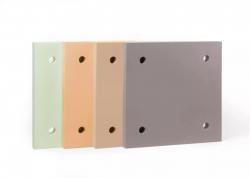 When it comes to construction, strength is often seen as vital to a building’s longevity with every component needing to withstand a significant amount of weight and pressure. But when it comes to choosing thermal break materials, more strength isn’t necessarily always better.
When it comes to construction, strength is often seen as vital to a building’s longevity with every component needing to withstand a significant amount of weight and pressure. But when it comes to choosing thermal break materials, more strength isn’t necessarily always better.
Structural thermal breaks are essential in improving a building’s energy efficiency and without them, buildings can suffer from increased heat loss, condensation issues, and an overconsumption of energy. It is important now, more than ever before, that in order to comply with the stricter regulations, architects and developers implement solutions like thermal breaks.
There are a number of various applications in which thermal breaks are needed and in each of these, it requires a thermal break that balances structural performance with optimal thermal insulation. That’s where selecting the right compressive strength becomes critical.
There is a common misconception, although logical, that architects and specifiers need a thermal break with the highest compressive strength available, regardless of the application, however this isn’t the case. Instead, the higher the compressive strength, the lower the thermal insulation performance. This is because denser materials tend to conduct more heat, reducing their effectiveness as insulators. In many cases, opting for a thermal break with unnecessarily high compressive strength means compromising on energy performance, ultimately spending more money than necessary.
The key to choosing the right thermal break for the project in hand is balance. It should be strong enough to handle the required load, but not so dense that it sacrifices R-value. At Armatherm™, we offer a wide variety of thermal break solutions designed for specific load and insulation requirements. For example, the Armatherm™ 500 has lower compressive strength, making it ideal for column bases and low-load applications. Whereas Armatherm™ FRR are ideal for high-load areas like balcony connections or steel-to-steel joints, you need a thermal break with higher compressive strength but doesn’t compromise on thermal performance.
At Armatherm™, we are proud to supply such a wide range of products which are specifically designed for certain applications, and whilst stronger thermal break materials tend to be more expensive, we ensure to only suggest the right type of material for your project. In addition to this, any of our products over 50mm thick are Passivhaus certified, meaning your project can meet sustainability targets. So, whether it’s a high-strength connection or a low-load, high-insulation application, we’ll help you specify the most effective and efficient thermal break solution.
Contact us today to discuss your project with our experts.
Armatherm Thermal Breaking in Cladding & Modern Construction
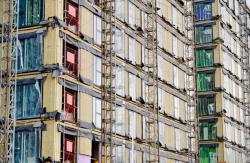 The Need for Energy-Efficient Building Solutions
The Need for Energy-Efficient Building Solutions
The European Commission for Energy has reported that buildings account for 40% of energy consumption and 36% of CO2 emissions across Europe. This makes it increasingly vital for architects to seek energy-efficient solutions when designing new buildings. A critical area often overlooked is the insulation of temperatures within cladded façades. Jonathan Shaw, Managing Director of Armatherm™, a specialist in thermal break solutions, explains the importance of thermal breaking within cladding and modern construction. He also highlights how architects can achieve energy savings by investing in a thermal bridging solution.
The Role of Cladding in Building Design
Cladding plays an essential role in protecting commercial buildings from external elements while providing structural support. However, when the steel cladding framework bridges the insulation envelope, it can conduct heat out of the building, increasing energy loss. By incorporating a non-metallic thermal break to support cladding structures, heat transfer can be significantly reduced. This solution also prevents condensation and stabilises temperature fluctuations when extending into the building envelope.
The Impact of Condensation on Building Health
Condensation is a common issue in buildings without an effective thermal break. A lack of thermal bridging causes cold temperatures to be transferred indoors, leading to cooler spots on interior walls. These areas are prone to condensation, which can result in dampness, mould, and potential health problems like asthma. In the 1980s, many buildings in the UK were constructed with external fixtures that lacked proper insulation. This allowed cold temperatures to penetrate the interior, leading to costly repairs and, in some cases, the demolition of entire buildings. If a thermal break had been specified, these issues could have been avoided.
High rise residential building of flats with cladding being replaced with fire resistant materials UK
Modern Solutions for Thermal Bridging
Thankfully, modern solutions no longer require demolishing buildings to resolve thermal bridging. Armatherm™’s products can reduce energy transfer by over 50%, helping to prevent condensation and energy loss.
Thermal Breaks Beyond Cladding
Thermal breaks aren’t limited to cladding projects; they are also used in structures that extend into the building envelope. Armatherm™’s product, Armatherm™ Grade, offers excellent thermal isolation properties and high load-carrying capacity. A recent project for Aldi involved insulating a 1000 sqm cold store room at their distribution centre. Armatherm™ Grade 500 was installed directly under steel column bases, bridging the floor slab insulation. The product’s inert, ultra-high-density closed-cell polymer ensured both thermal performance and structural integrity. Since installation, Aldi has expanded the use of Armatherm™ solutions to additional cold store distribution centres across the UK.
High-Performance Thermal Break Solutions
In the past, applications requiring both high thermal insulation and structural load-bearing capacity often involved compromises between the two. However, Armatherm™’s thermal break solutions address both needs without any trade-offs. A traditional material for base column isolation is Iroko timber, which can handle high loads and provides good insulation when dry. However, over time, timber absorbs moisture, which reduces its insulating properties and can cause rotting. In contrast, Armatherm™’s solutions do not absorb water, providing consistent performance for the building’s lifespan, which helps architects specify them with confidence for foundation structures.
Energy Efficiency and Cost Savings with Thermal Breaks
Buildings without effective thermal breaks suffer from energy inefficiency. Heat loss through poorly insulated structures undermines the energy performance of the entire building. This not only affects the building’s energy efficiency but also makes it costly to maintain. Using thermal breaks can reduce energy loss by up to 80% in commercial buildings, providing substantial savings on operating costs.
The Importance of Staying Informed About New Technologies
As architects continue collaborating with developers to create sustainable, energy-efficient buildings, understanding the latest market technologies is essential. A simple yet powerful solution, such as a thermal break, can lead to significant energy cost savings. By incorporating thermal solutions into major construction projects, architects can ensure long-term financial benefits and energy efficiency.





